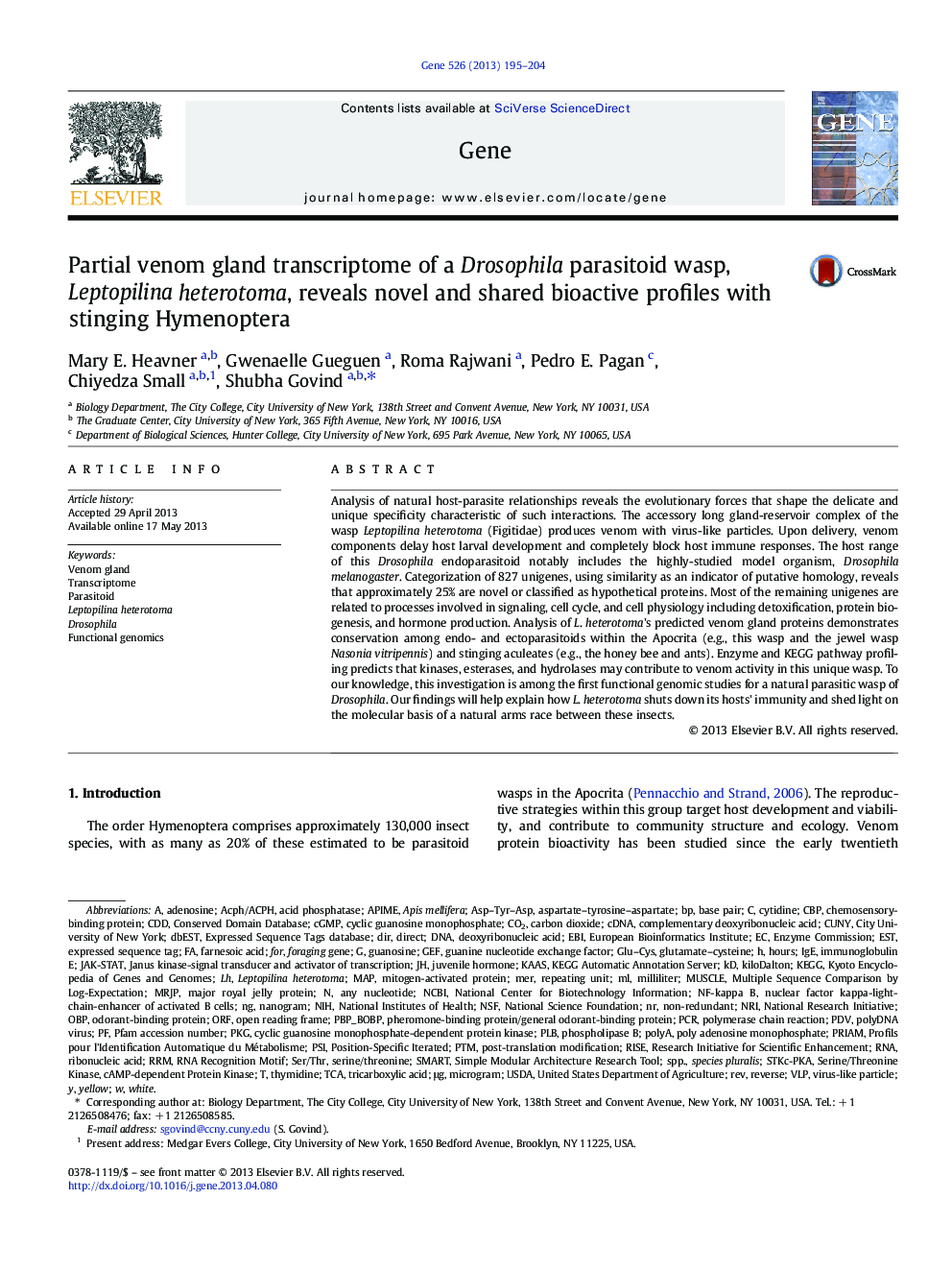| کد مقاله | کد نشریه | سال انتشار | مقاله انگلیسی | نسخه تمام متن |
|---|---|---|---|---|
| 5906361 | 1159970 | 2013 | 10 صفحه PDF | دانلود رایگان |

- A pilot transcriptome of the L. heterotoma venom gland complex yields 827 unigenes.
- More than 150 novel transcripts revealed, lacking significant known similarities.
- The remaining unigenes support conservation with venomous and stinging Hymenoptera.
- A subset of these reported unigenes likely contribute to venom and host control.
- A leading report of a figitid venom transcriptome targeting Drosophila hosts.
Analysis of natural host-parasite relationships reveals the evolutionary forces that shape the delicate and unique specificity characteristic of such interactions. The accessory long gland-reservoir complex of the wasp Leptopilina heterotoma (Figitidae) produces venom with virus-like particles. Upon delivery, venom components delay host larval development and completely block host immune responses. The host range of this Drosophila endoparasitoid notably includes the highly-studied model organism, Drosophila melanogaster. Categorization of 827 unigenes, using similarity as an indicator of putative homology, reveals that approximately 25% are novel or classified as hypothetical proteins. Most of the remaining unigenes are related to processes involved in signaling, cell cycle, and cell physiology including detoxification, protein biogenesis, and hormone production. Analysis of L. heterotoma's predicted venom gland proteins demonstrates conservation among endo- and ectoparasitoids within the Apocrita (e.g., this wasp and the jewel wasp Nasonia vitripennis) and stinging aculeates (e.g., the honey bee and ants). Enzyme and KEGG pathway profiling predicts that kinases, esterases, and hydrolases may contribute to venom activity in this unique wasp. To our knowledge, this investigation is among the first functional genomic studies for a natural parasitic wasp of Drosophila. Our findings will help explain how L. heterotoma shuts down its hosts' immunity and shed light on the molecular basis of a natural arms race between these insects.
Journal: Gene - Volume 526, Issue 2, 10 September 2013, Pages 195-204